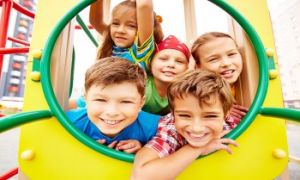The Early Years Learning Framework outlines five principles that reflect contemporary theories and research evidence concerning children’s learning and early childhood pedagogy. These principles are meant to underpin practice so that all children are supported to make progress in relation to the Learning Outcomes. The following article provides information on each of the 5 Principles and examples of strategies of how to implement the eylf principles into your service.
Principle 1: Secure, Respectful and Reciprocal Relationships
Young children experience their world through a densely woven fabric of relationships, and these relationships affect virtually all aspects of their development. Secure attachment is especially important in the first months of a child’s life. When children have caregivers who are available, in tune with their needs, affectionate, demonstrate pleasure in their interactions and are able to comfort in times of stress, they are better equipped to deal with the uncertainties and complexities of future life. Positive relationships remain important throughout childhood, as the EYLF1 explains, “through a widening network of secure relationships, children develop confidence and feel respected and valued. They become increasingly able to recognise and respect the feelings of others and to interact positively with them.”
Strategies To Implement Principle 1
- Be attuned to children’s thoughts and feelings; watch out not just for words that seek your input, guidance or reassurance but also for vocal and non-verbal cues, like gestures, posture or expressions. So if a child is making a funny face at you, allocating a role in dramatic play like ‘you can be the giant’ or throwing a ball at you, it is important that educators respond authentically and sensitively.
- Be devoted to the child’s sense of well-being by ensuring they are safe from hazards, well-fed and rested but also by seeing to that feel comforted and secure when emotionally stressed. For example, when planning outdoor play or nature walks, ensure children are wearing sun-safe hats and a risk assessment of the area has been carried out, especially with relation to water bodies, poisonous plants or creatures.
- Help children value teamwork – encourage collaborative play through group activities and circle time. Use projects and transitions to enable children to be aware of their responsibilities to others and practice empathy. For example, something as basic as getting ready for lunch or snack time can be used to learn to divide responsibilities, like tidying up the play area, laying the table cloth, getting the cutlery, and waiting till everyone has been served before starting to eat.
Principle 2: Partnerships
Parents are the first teachers of children therefore it is important for educators to partner with families to ensure the best outcomes for children. The EYLF underlines some essential characteristics of genuine partnerships; between educators and families, such partnerships would:
- value each other’s knowledge of each child
- value each other’s contributions to and roles in each child’s life
- trust each other
- communicate freely and respectfully with each other
- share insights and perspectives about each child
- engage in shared decision-making.
Strategies To Implement Principle 2
- Getting parents’ inputs on the service program, environment or their child’s development through feedback forms, surveys or informal discussions.
- Set up a Daily Parents Journal to see what their child has been doing all day.
- Write a lunchbox to parents to share something special, interesting or new – like helping a friend pack up for home – that their child has done over the day.
- Put in place a well-thought-out grievance redressal process for parents so that they know that their concerns with being heard.
- Invite families to volunteer to take a class, teach a skill, supervise on a school trip or help out with a service event like the Sports Day or end of school party.
- Make partnerships fun by inviting family members over to the centre on Parent Play Days or Grandparents Days.
- Develop Take-Home programs that continue learning at home; these could be in the form of weekly photos or picture cards where the text relates to that week’s literacy, numeracy or sensory/motor focus.
The EYLF points out that “Apart from families, partnerships also involve educators and support professionals working together to explore the learning potential in everyday events, routines and play so that children with additional needs are provided with daily opportunities to learn from active participation and engagement in these experiences in the home and in early childhood or specialist settings”. You can improve partnerships with support professionals by:
- Networking to build relationships with support professionals in your area like the local nurse, occupational therapists, physiotherapists, paediatricians, speech therapists, and social services.
- Reading up on referral processes so that you know how to get help for children and their families in case they need to.
Principle 3: High Expectations and Equity
This involves the belief that all children have the ability to learn and grow whatever their socio-economic background, cultural group or abilities and providing varied opportunities for all children to learn. The principle has been included because research2 shows that having high expectations for every child is offers manifold benefits for children and early childhood education. When adult caregivers like parents and teachers expect children to do better, it gives a major boost to children’s sense of agency, self-esteem and motivation – all factors which in turn lead to better performances at school. In fact, early childhood professionals’ high expectations have the most impact on children considered at risk. For example, in a study3 on the effects of teacher expectations, boys from minority groups had the largest gains when there were high expectations and the lowest scores when their abilities were underestimated. Though there are many internal factors and external factors for high resilience when children see that their abilities are goals are held high and worthwhile by early educators, they become more resilient in working towards them, even through vicissitudes.
Strategies To Implement Principle 3
In order to follow this principle, educators should set the bar high for every child’s learning achievements and give them the support and encouragement needed to achieve those goals. Among the ways, educators can apply this principle are by:
- Creating a learning profile for each child that is updated regularly and covers their background and domain of learning ranging from literacy and numeracy to social, emotional, fine motor and gross motor learning.
- Ensuring that the curriculum reflects the diversity and differences of children in your care. So for instance see learning environments and interventions are designed not just for visual and verbal learners but for less noticeable learning styles too like kinaesthetic, aural and intrapersonal.
- Planning learning interventions and strategies that not just draw upon or reinforce current learning but challenge the child to explore and experiment within the safety of supportive relationships.
- Designing assessing strategies that reflect individual learning styles, strengths, interests and abilities besides literacy and numeracy outcomes.
- Greeting each child warmly and by name when they arrive or during circle time; get all children together in the welcome ritual which could involve a loving hug or a welcome rhyme set to a nice melody.
- Following a thought-through process when dealing with children who are bullied or hurt; includes treating all sides fairly and considerately with patience and understanding even while services processes have to be followed.
Principle 4: Respect for Diversity
For educators, respecting diversity means using the curriculum to value and reflect the practices, values and beliefs of families which also encompasses their histories, cultures, languages, traditions, child-rearing practices and lifestyle choices. In Australia, this EYLF principle particularly includes promoting a greater understanding of Aboriginal and Torres Strait Islander ways of knowing and being. Additionally, educators should value children’s different capacities and abilities and respect differences in families’ home lives.
Strategies To Implement Principle 4
Here are some examples of this principle in action:
- In order to make the families and students of non-English speaking backgrounds feel engaged, post translated notices and other information.
- Plan lessons with stories, songs, poems and rhymes from different cultures and create positive associations with darker colours by using stories like Black Beauty.
- In the classroom, ensure that posters, artworks, charts and other wall displays include figures with diverse skin colours, abilities and professions; similarly equip craft and play areas with toys, books, dolls, stickers and puppets from a variety of races and ethnicities.
- Plan trips to the zoo or museums that showcase the arts, architecture, wildlife, food and history of other cultures and continents.
- In the classroom, use maps of Aboriginal Australia and colonial Australia to open discussions on how countries and societies change over time. At indoor meetings, public forums or when taking children in the outdoors, acknowledge the traditional custodians of the land.
- In the classroom and playgrounds, provide furnishings and equipment that fit various body sizes, types and abilities; for example, table-arm chairs should be usable by both left-handed and right-handed children.
- See that needs of children with a different vision, mobility, communication, and reading abilities are addressed and accommodated but without segregation; for example, wheelchair-accessible seating should not be relegated to the edges.
- Equip the learning space with assistive technologies including multiple media for presenting visual or auditory information as well as those that allow information sharing4.
Principle 5: Ongoing Learning and Reflective Practice
Ongoing learning happens when educators are continually engaged in building their professional knowledge and developing learning communities. According to the EYLF, it is also important that educators “become co-learners with children, families and community, and value the continuity and richness of local knowledge shared by community members, including Aboriginal and Torres Strait Islander Elders”.
Critical reflection involves closely examining all aspects of events and experiences from different perspectives or to put it very simply, thinking about why we do the things that we do. Through such thinking, educators can gather information and gain insights that support, inform and enrich decision-making about children’s learning. The EYLF suggests a few overarching questions that educators can use to guide their own reflective practices, like:
- What are my understandings of each child?
- What theories, philosophies and understandings shape and assist my work?
- Who is advantaged when I work in this way? Who is disadvantaged?
- What questions do I have about my work? What am I challenged by? What am I curious about? What am I confronted by?
- What aspects of my work are not helped by the theories and guidance that I usually draw on – like Montessori, Reggio Emilia, Waldorf – to make sense of what I do?
- Are there other theories or knowledge – like the Ecological Theory of Bronfenbrenner or the Information Processing of Chomsky5 – that could help me to understand better what I have observed or experienced? How might those theories and that knowledge affect my practice?
Strategies To Implement Principle 5
Among other ways educators can follow this principle are:
- Adding to their formal qualifications by studying for diplomas and graduate degrees so as to not only expand their knowledge and practice but also enhance their own professional status.
- Signing up or volunteering for professional development opportunities like workshops, conferences, webinars, and in-services training sessions to improve their professional practice.
- Engaging in informal but recognised ways of professional development like in-depth discussions, problem-solving, sharing of ideas within your service as well as networking or research with other services and organizations.
- Persuading your service to become members of professional associations, hubs, sector journals and interest groups; these present childcare workers with valuable opportunities to meet others working in similar or related roles – they discuss current practices, exchange new ideas and check in with each other as a way affirming their own practice and approaches.
- Looking for online resources; many research groups, policy bodies, government departments and peak bodies offer no-cost email subscriptions and use this method to circulate new publications and other forms of information6.
- Developing a philosophy statement with your own team that addresses questions like ‘what do we believe’, ‘why do we hold such beliefs’ and ‘how can translate these beliefs into practice.
- Developing a Learning Journal that reflects your beliefs and practices about children’s learning; while it could be something for children to look at and enjoy, you can primarily use it to educate parents with regard to your core values on play and learning.
- Identify a ‘critical friend’ in your team or service who can support and challenge your thinking and practice7.
Principles related to our beliefs and values. The Early Years Learning Framework provides us with Principles to guide us in our work with children and focuses on assisting each individual child to make progress toward the Learning Outcomes.
Further Reading:
The EYLF is a guide that consists of Principles, Practices and 5 main Learning Outcomes along with each of their sub outcomes, based on identity, community, wellbeing, learning and communication. For more information: Understanding EYLF
Within the Early Years Learning Framework, there are three basic concepts that children’s lives are characterized by. Belonging, Being and Becoming. For more information, please read the following: Belonging, Being & Becoming Concepts Of The EYLF
The EYLF Learning Outcomes are goals that can be achieved by a child during their learning. The outcomes and sub outcomes cover a variety of areas which include identity, community, wellbeing, learning and communication. For more information, please read the following: EYLF Learning Outcomes
References:
- Belonging, Being and Becoming EYLF, ACECQA
- Ahmed, W., Minnaert,A., Van Der ,G. & Kuyper, H. (2008). Perceived social support and early adolescents’ achievement: The mediational roles of motivational beliefs and emotions. Journal of Youth Adolescence, 39 (1), 36-46.
- Towards Inclusive Learning Spaces, Education Spaces
- Learning and Growing Through Professional Development, ACECQA
- Educators Guide To The EYLF, ACECQA







 Here is the list of the EYLF Learning Outcomes that you can use as a guide or reference for your documentation and planning. The EYLF
Here is the list of the EYLF Learning Outcomes that you can use as a guide or reference for your documentation and planning. The EYLF The EYLF is a guide which consists of Principles, Practices and 5 main Learning Outcomes along with each of their sub outcomes, based on identity,
The EYLF is a guide which consists of Principles, Practices and 5 main Learning Outcomes along with each of their sub outcomes, based on identity, This is a guide on How to Write a Learning Story. It provides information on What Is A Learning Story, Writing A Learning Story, Sample
This is a guide on How to Write a Learning Story. It provides information on What Is A Learning Story, Writing A Learning Story, Sample One of the most important types of documentation methods that educators needs to be familiar with are “observations”. Observations are crucial for all early childhood
One of the most important types of documentation methods that educators needs to be familiar with are “observations”. Observations are crucial for all early childhood To support children achieve learning outcomes from the EYLF Framework, the following list gives educators examples of how to promote children's learning in each individual
To support children achieve learning outcomes from the EYLF Framework, the following list gives educators examples of how to promote children's learning in each individual Reflective practice is learning from everyday situations and issues and concerns that arise which form part of our daily routine while working in an early
Reflective practice is learning from everyday situations and issues and concerns that arise which form part of our daily routine while working in an early Within Australia, Programming and Planning is reflected and supported by the Early Years Learning Framework. Educators within early childhood settings, use the EYLF to guide
Within Australia, Programming and Planning is reflected and supported by the Early Years Learning Framework. Educators within early childhood settings, use the EYLF to guide When observing children, it's important that we use a range of different observation methods from running records, learning stories to photographs and work samples. Using
When observing children, it's important that we use a range of different observation methods from running records, learning stories to photographs and work samples. Using This is a guide for educators on what to observe under each sub learning outcome from the EYLF Framework, when a child is engaged in
This is a guide for educators on what to observe under each sub learning outcome from the EYLF Framework, when a child is engaged in The Early Years Learning Framework describes the curriculum as “all the interactions, experiences, activities, routines and events, planned and unplanned, that occur in an environment
The Early Years Learning Framework describes the curriculum as “all the interactions, experiences, activities, routines and events, planned and unplanned, that occur in an environment


